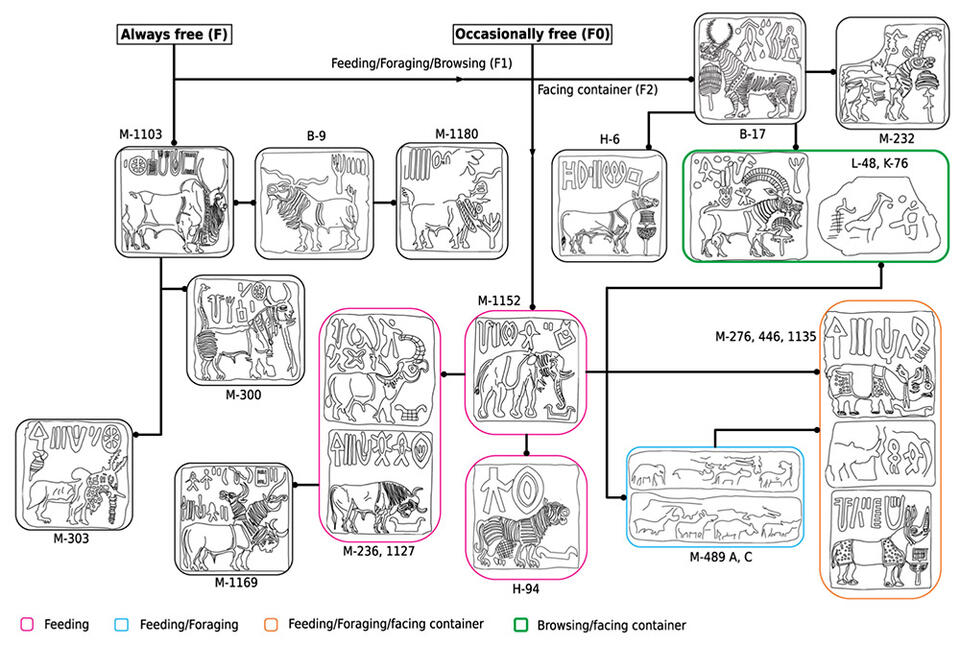With a classification of seal-impressions based on a design logic and genealogical figure charts
This is an applied technical paper which rewards the follower with valuable insights and serves up some complex puzzles in Indus iconography for further cogitation. On the one hand, the careful classification of animal seals from the height of Indus culture shows how rigorously some of the rules and associations between elements was pursued by Indus craftsmen. On the other, the various associations between Indus iconographic techniques and rules show how complex these rules could be. For example, certain animals can look back (tiger, goat and markhor), others usually but not always have a manger (feeding trough) in front of them (elephant), and so on. The author, who dedicates this paper to his teacher Iravatham Mahadevan, neatly breaks down all these attributes, and then shows how these might be connected and amended in charts like the one shown above, Animal avatar by association with the object avatar in front.
Just over half of the seal impressions with animal figures analyzed come from Mohenjo-daro, and over a fifth from Harappa, and less than a tenth from Lothal reminding us of how much these more excavated sites contribute to our undestanding of Indus culture. The rigorous classification scheme reminds us, how at least in certain instances, the standard we know so well always appears in front of the unicorn could also appear in front of a markhor, or two-horned creature (urus?) as well as composite creatures. The author tries to deduce what some of the pairings might imply, e.g. "The urus, unicorn and horned tiger never face a manger, never shown feeding, as if to say, 'does not eat'" (p. 10). Many such patterns or relationships are exposed, such as the examples where a standing deity is placed inside a pipal pot, and "is usually composed with a 'kneeling deity' . . . who offers something to the standing deity in the pipal pot. The two deities are identically adorned, and invariably so. The adorer and adored have an intertwined fate and no independent identity" (p. 12).
The bringing together of these correspondences and clues through such a vast array of seals is of great interest, as are the "prohibitive principles" the author also discerns: "Animals never sit. Only some animals turn. Only the markhor and zebu determine the composites. The bison always determines the joined animals. The identity of the deity is always the same, horned head dress and bangled arms" (p. 16). An interesting section talks about the large versions of the standard that usually appears before the unicorn also being paraded, it seems, through town in much larger form, "proof to the monumental usage of Indus iconography, albeit on a material (cloth, wood...) that could not survive" (p. 23).
The author also offers an answer to the "pasupati" puzzle, three-faced or four based on his analysis, on how certain broken seals were reconfigured, and ends on this hopeful note: "The larger implication is, for the Indus script to be properly investigated, the Indus iconography has to be decoded. The classification in this paper may well serve as the basis for an interpretation of the iconography which I reserve for a forthcoming paper" (p. 18).
We look forward to the next steps.

